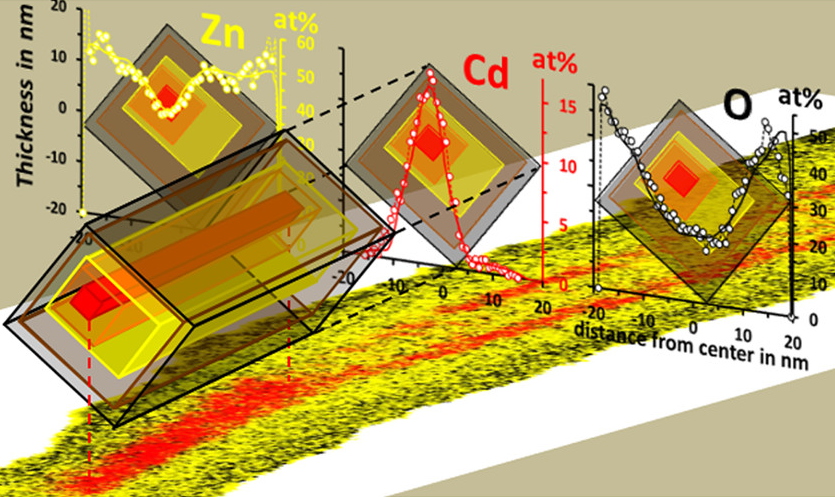
Quantitative 3D reconstruction of the structure and composition of a CdTe quantum box in a ZnTe nanowire. Rueda-Fonseca et al.,
Nano Letters, 2016 |
| |
The NANO3D project: This project aims at developing a fast and easy method for the quantitative 3D reconstruction of core-shell nanostructures. The method requires a maximum of two X-ray maps acquired at two different tilt angles, preferably perpendicular to each other. The method is based on the modelling of the nanostructure cross-section using a series of imbricated ellipses whose dimensions are defined by their major and minor diameters. The number of ellipses depends on the number of chemical phases which are identified from the concentration profiles determined with the IZAC code. The position and orientation of each ellipse are determined by the coordinates of their respective centers and the overall tilt of the nanostructure, respectively. More sophisticated models, using hexagons or rectangles instead of ellipses, have been developed to consider the facetted sidewalls of crystalline nanostructures. These models are based on the elliptical model, by constructing the tangents to an ellipse, and hence, are defined by the same parameters, which is useful when comparing models. The method was applied for reconstructing core-shell nanostructures on (Mg, Mn, Cd, Zn)(Te,Se) nanowires, (Al, Cu, Sn)(Si,Ge) nanowires, (In,Ga)As nanowires and (Pt, Co) nanoparticles. |